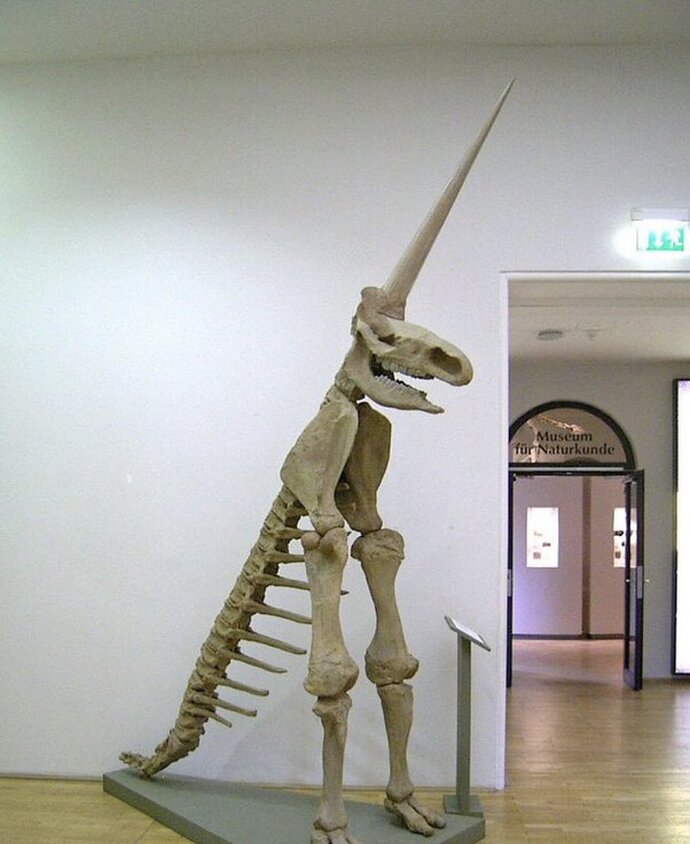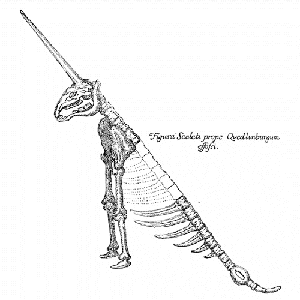In 1663, a skeleton was found in a cave Quedlinburg on the Zeunickenberg near Magdeburg in what is now Germany. Otto von Guericke, scientist, inventor, and at the time chief executive of the city, examined the remains and pronounced his opinion that it was the skeleton of a unicorn, as recounted by Gottfried Wilhelm Leibniz in his 1749 book Protogaea.
In his book about the vacuum, Guericke mentions in passing that the skeleton of a unicorn was found with the rear part of its body bent back, as is common with animals, but with a raised head and carrying on its forehead an extended horn about five yards long; the horn was the width of a human leg and tapered gradually.
Based upon this evidence, Leibniz “reconstructed” the animal, as shown in this illustration from his book.
Based upon Guericke’s report, the exhibit at the Natural History Museum in Magdeburg shown at the top of the page was assembled in 1672, from what are now believed to the bones of a woolly rhinoceros.
Here is more about “Leibniz on Unicorns” from Philosophy Now. Unicorn Cave is now open to the public.


